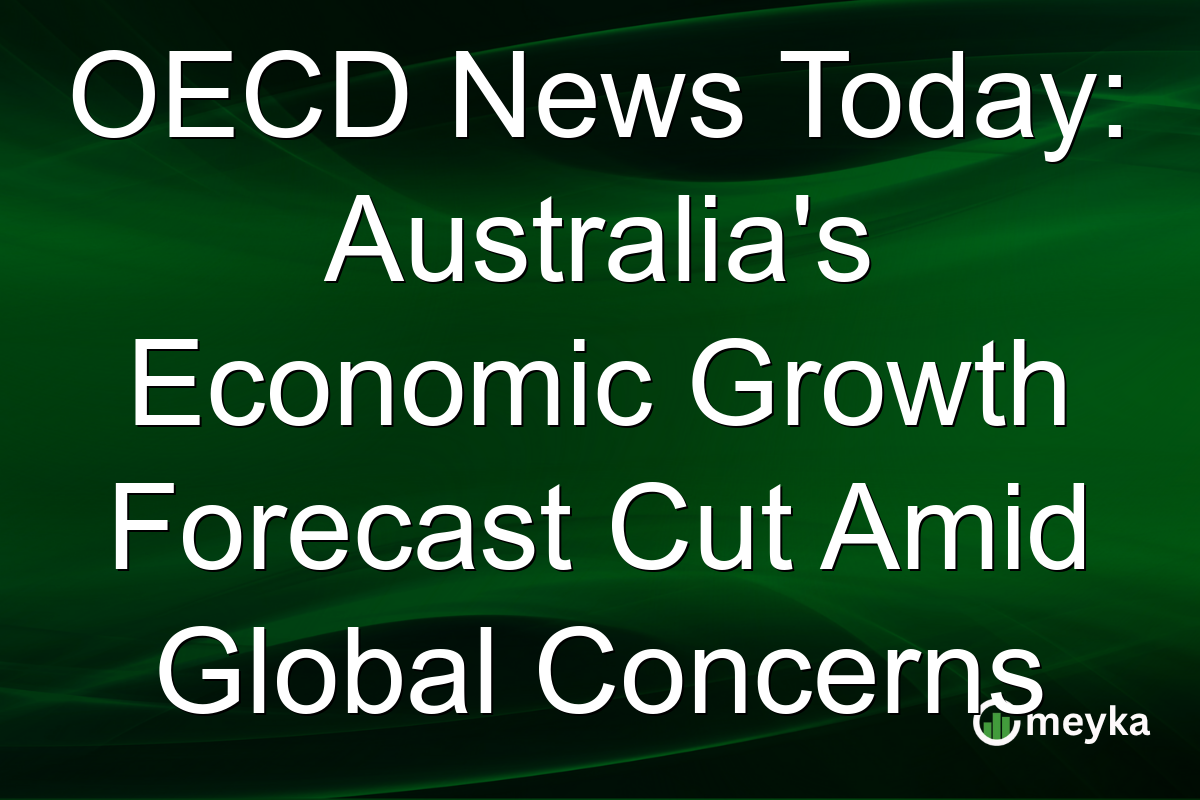OECD News Today: Australia’s Economic Growth Forecast Cut Amid Global Concerns
The Organisation for Economic Co-operation and Development (OECD) has slashed Australia’s economic growth forecast for 2025. This revision, emphasized in recent reports, cites ongoing inflationary pressures, tepid consumer spending, and a downturn in global trade. With Australia’s recovery path now under increased scrutiny, investors and policymakers are keenly observing the implications of this new outlook.
Understanding the OECD’s Forecast
Australia’s economic growth forecast for 2025 has been reduced from 2.5% to 1.8% by the OECD. This adjustment is a reflection of various domestic and international factors, notably persistent inflation which continues to affect consumer purchasing power. Furthermore, global trade, a significant influencer on Australia’s economic activities, is experiencing a slowdown. According to a Reuters report, inflation in Australia is currently above the Reserve Bank’s target range of 2-3%, which has sparked concerns about potential interest rate hikes.
The Role of Global Trade and Consumer Spending
Australia, heavily reliant on trade, is feeling the pinch as global supply chains remain disrupted. The OECD highlights that weakened global demand is likely to continue dampening export volumes. Consumer spending, a key driver of the Australian economy, is also showing lackluster growth. Recent data indicates a sluggish 2% increase in household spending in contrast to last year’s stronger figures. This trend is causing apprehension about the domestic market’s ability to contribute positively to GDP growth. As noted in a Bloomberg article, rising living costs are forcing consumers to tighten their belts, impacting retail and service sectors.
Implications for Australian GDP
The reduction in the growth forecast has varied implications for Australia’s GDP outlook. Currently, the GDP growth rate is predicted to slow, hovering around 1.8% by 2025. This reflects a broader trend of cautious spending and investment. The OECD’s assessment advises that without substantial policy shifts, achieving significant growth may prove challenging. The cooling of demand from major trading partners like China compounds this issue, as Australia’s export-driven sectors are directly affected by these external economic climates. As detailed by CNBC, the Australian government is urged to implement measures to bolster economic resilience against these pressures.
What This Means for Investors
For investors, the OECD’s revised forecast signals a need to reassess market strategies. The anticipated slowdown suggests that sectors such as retail and manufacturing could face significant challenges. However, sectors related to raw materials might see stability due to persistent global demand. This shift urges investors to consider a diversified portfolio approach, taking into account potential gains from non-traditional growth markets. The Australian Stock Exchange could exhibit volatility as these economic conditions continue to evolve, making it vital for investors to stay informed through reliable platforms like Meyka, which offers real-time analysis tools to aid in data-driven investment decisions.
Final Thoughts
The OECD’s revised economic growth forecast for Australia underscores the complexity of the global economic environment. By highlighting inflation and global trade issues, it brings attention to critical areas needing policy intervention. Investors, policymakers, and businesses must stay agile and informed to navigate these challenges. Leveraging platforms like Meyka for comprehensive market insights can provide the necessary tools to make informed investment decisions and anticipate future trends efficiently.
FAQs
The OECD cited persistent inflation, weak consumer spending, and global trade disruptions as key factors behind Australia’s downgraded growth forecast for 2025.
The forecast suggests a GDP growth rate of about 1.8% in 2025, highlighting potential challenges unless policy measures are enacted to stimulate the economy.
Consumer spending drives a significant portion of Australia’s GDP. Weak consumption trends affect sectors like retail and services, slowing overall economic growth.
Disclaimer:
This is for information only, not financial advice. Always do your research.






